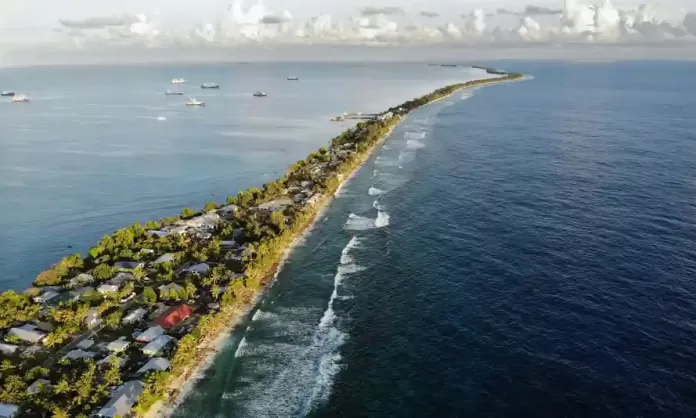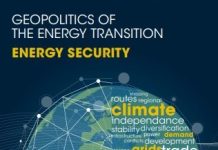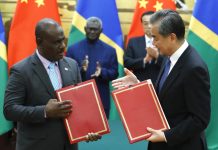By Mark Howden and Morgan Wairiu
A new report from the Intergovernmental Panel on Climate Change (IPCC) finds that the world may warm by 1.5°C by the early 2030s, much earlier than previously estimated. It’s terrible news for the Pacific. With temperatures rising above 1.5°C, Pacific communities are likely to experience increasingly devastating climate change impacts.
The key takeaway from the IPCC report is that the more we know, the worse it looks. The planet is now already between 0.8°C and 1.3°C warmer than in pre-industrial times – moving frighteningly close to the 1.5°C threshold. This warming has already worsened temperature extremes, such as marine heatwaves that cause coral bleaching and heatwaves on land, with dangerous consequences for human health. Temperature and other climate extremes will become more intense, frequent and appear in more locations with every fraction of a degree that the planet warms.
Some of the worst impacts will be in the Pacific. Particularly concerning for the region are some of the historical sea level rise analyses and projections in this new IPCC report.
In the western Pacific, sea levels rose faster than anywhere else in the world between 1993 and 2015, and by 2050 they will continue to rise by an additional 0.10–0.25 metres, irrespective of a reduction in greenhouse gas emissions. By 2100, Pacific communities will experience extreme coastal impacts unless the world takes strong action to reduce emissions now; one in 100-year coastal inundation events will occur annually (or more frequently) by 2100 at 20% more locations under a high-emission scenario.
This impending sea level rise will create compound events with other climate factors. Although the Pacific is projected to generally face fewer cyclones under future warming, they are likely to become more intense. This, coupled with sea level rise, will worsen already deadly storm surge events in countries such as Fiji and Vanuatu.
Additionally, despite a projected increase in rainfall with future climate change in the equatorial Pacific, many locations will likely face greater water scarcity due to saltwater intrusion from rising seas and higher rates of potential evaporation due to increased temperatures. For example, a 20% decline in groundwater availability is projected by 2050 in the coral atoll islands of Federated States of Micronesia (FSM). Under a high sea level rise scenario, the availability of fresh groundwater in FSM could decline by more than half due to ocean water intrusion and drought events.
The report confirms that it is not possible to achieve the low level of warming aimed for in the Paris agreement unless we stop emitting high levels of greenhouse gas emissions, a point that has long been argued by Pacific peoples. This is because we now better understand and are more certain about how temperatures would increase based on a doubling of CO2 concentrations (a measure known as the equilibrium climate sensitivity). The range is now estimated to be 2.5°C–4.0°C, up from 1.5°C–4.5°C in previous IPCC reports. This means less chance of low temperature rises and more chance of high temperature rises for a given level of CO2.
If greenhouse gas emissions do not start to decline significantly before 2050, the world is extremely likely to exceed 2°C warming during the 21st century. To avoid the more extreme future climate scenarios detailed in the report requires serious emissions reductions. The emission scenarios that lead to lower levels of warming all require removing greenhouse gases from the atmosphere, as well as aggressive reduction of emissions. Declining emissions from the 2020s onwards and reaching net zero in the 2050s is the best-case scenario for keeping the planet below 1.5°C. Fortunately, there are many emerging opportunities to reduce greenhouse gas emissions. This includes transitioning to 100% renewable energy as rapidly as possible, decarbonising transport, reducing emissions from agriculture, and drawing down and storing atmospheric greenhouse gas emissions.
The findings from this IPCC report will be at the forefront of discussions at the forthcoming UN Climate Change Conference in Glasgow (COP26). Countries in the Pacific, along with other small island developing states, will lead the fight for a sub-1.5°C world by advocating for ambitious updates to all national commitments. They will do this by leading by example: setting the targets high and uniting under a common vision – a world in which we do not cross the line of 1.5°C in the next 10 years, or ever.
It is vital Australia and other non-Pacific nations join them.
Professor Mark Howden is a vice-chair of the Intergovernmental Panel on Climate Change and director of the Institute for Climate, Energy & Disaster Solutions at the Australian National University
Dr Morgan Wairiu, an expert in food security and climate change with the University of the South Pacific’s Pacific Centre for Environment and Sustainable Development (PaCE-SD)
SOURCE: THE GUARDIAN/PACNEWS


















